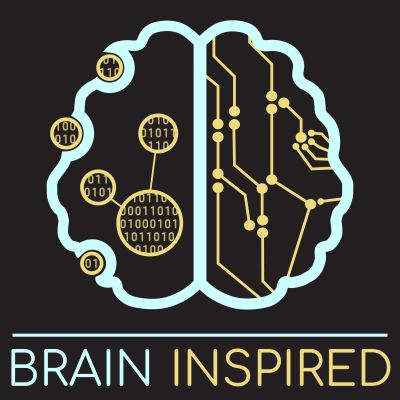Neuroscience and artificial intelligence work better together. Brain inspired is a celebration and exploration of the ideas driving our progress to understand intelligence. I interview experts about their work at the interface of neuroscience, artificial intelligence, cognitive science, philosophy, psychology, and more: the symbiosis of these overlapping fields, how they inform each other, where they differ, what the past brought us, and what the future brings. Topics include computational neuroscience, supervised machine learning, unsupervised learning, reinforcement learning, deep learning, convolutional and recurrent neural networks, decision-making science, AI agents, backpropagation, credit assignment, neuroengineering, neuromorphics, emergence, philosophy of mind, consciousness, general AI, spiking neural networks, data science, and a lot more. The podcast is not produced for a general audience. Instead, it aims to educate, challenge, inspire, and hopefully entertain those interested in learning more about neuroscience and AI.
https://braininspired.co/series/brain-inspired/
BI 179 Laura Gradowski: Include the Fringe with Pluralism
Support the show to get full episodes and join the Discord community.
Check out my free video series about what's missing in AI and Neuroscience
Laura Gradowski is a philosopher of science at the University of Pittsburgh. Pluralism is roughly the idea that there is no unified account of any scientific field, that we should be tolerant of and welcome a variety of theoretical and conceptual frameworks, and methods, and goals, when doing science. Pluralism is kind of a buzz word right now in my little neuroscience world, but it's an old and well-trodden notion... many philosophers have been calling for pluralism for many years. But how pluralistic should we be in our studies and explanations in science? Laura suggests we should be very, very pluralistic, and to make her case, she cites examples in the history of science of theories and theorists that were once considered "fringe" but went on to become mainstream accepted theoretical frameworks. I thought it would be fun to have her on to share her ideas about fringe theories, mainstream theories, pluralism, etc.
We discuss a wide range of topics, but also discuss some specific to the brain and mind sciences. Laura goes through an example of something and someone going from fringe to mainstream - the Garcia effect, named after John Garcia, whose findings went agains the grain of behaviorism, the dominant dogma of the day in psychology. But this overturning only happened after Garcia had to endure a long scientific hell of his results being ignored and shunned. So, there are multiple examples like that, and we discuss a handful. This has led Laura to the conclusion we should accept almost all theoretical frameworks, We discuss her ideas about how to implement this, where to draw the line, and much more.
0:00 - Intro 3:57 - What is fringe? 10:14 - What makes a theory fringe? 14:31 - Fringe to mainstream 17:23 - Garcia effect 28:17 - Fringe to mainstream: other examples 32:38 - Fringe and consciousness 33:19 - Words meanings change over time 40:24 - Pseudoscience 43:25 - How fringe becomes mainstream 47:19 - More fringe characteristics 50:06 - Pluralism as a solution 54:02 - Progress 1:01:39 - Encyclopedia of theories 1:09:20 - When to reject a theory 1:20:07 - How fringe becomes fringe 1:22:50 - Marginilization 1:27:53 - Recipe for fringe theorist
